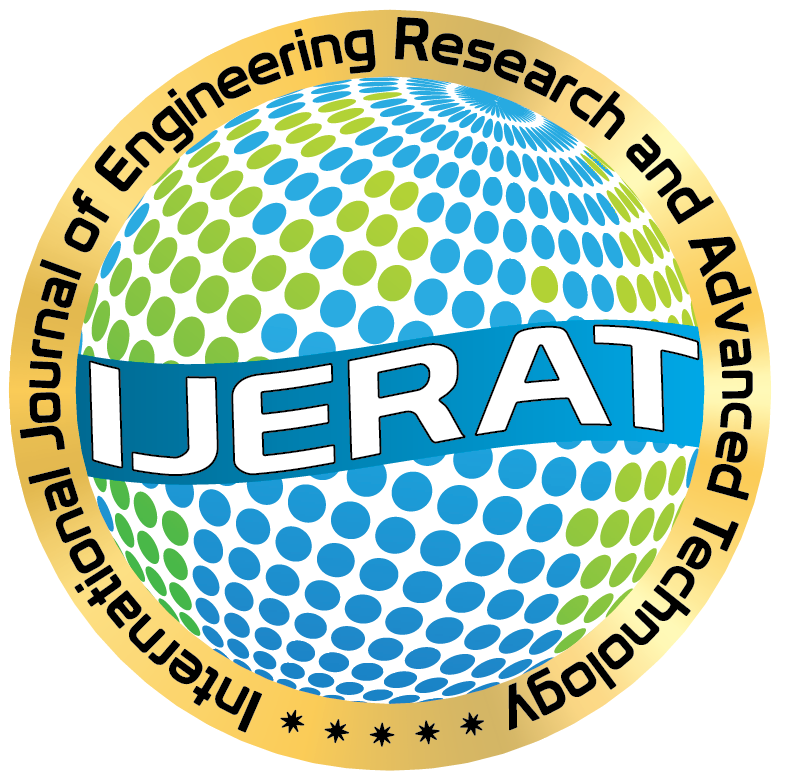Performance of Green Concrete Comprising Waste Ceramic as a Fine Aggregate Replacement: Effect of Sulfuric Acid on Degradation Process
DOI:
https://doi.org/10.31695/IJERAT.2020.3676Keywords:
Waste ceramic powder, Sulfuric acid attack, Concrete, Fine aggregate, Compressive strengthAbstract
This study investigated the durability performance of concrete exposed to Sulfuric acid, as well as assists to reduce the landfill and environmental pollution problems, by incorporating 30% ceramic waste powder as a replacement of fine aggregate. Concrete specimens of 100 × 100 × 100 mm in dimensions were cast with a 0.5 water/cement ratio, and 31.4 MPa compressive strength at age of 28-day. The durability of concrete cubes was periodically examined by means of measuring the change in mass, residual compressive strength, and visual inspection for a period of 14 weeks of exposure to 5% Sulfuric acid attack (H2SO4). The results showed that incorporated 30% of waste ceramic powder contributed to enhancing the resistance of concrete by improving the pore structure of concrete under sulphate attacks due to the formation of extra C-S-H gel through the chemical reaction between calcium hydroxide and silica. It can be concluded that the ceramic waste powder restricted the ability of sulphate ions to penetrate the concrete, which led to better performance in acidic solution.
References
S.K. Kirthika, S.K. Singh, A. Chourasia, Alternative fine aggregates in production of sustainable concrete- A review, Journal of Cleaner Production (2020) 122089.
M. Gonzalez, I. Navarrete, P. Arroyo, G. Azúa, J. Mena, M. Contreras, Sustainable decision-making through stochastic simulation: Transporting vs. recycling aggregates for Portland cement concrete in underground mining projects, Journal of Cleaner Production 159 (2017) 1-10.
S. Mundra, P.R. Sindhi, V. Chandwani, R. Nagar, V. Agrawal, Crushed rock sand – An economical and ecological alternative to natural sand to optimize concrete mix, Perspectives in Science 8 (2016) 345-347.
G.F. Huseien, A.R.M. Sam, J. Mirza, M.M. Tahir, M.A. Asaad, M. Ismail, K.W. Shah, Waste ceramic powder incorporated alkali acti-vated mortars exposed to elevated Temperatures: Performance evaluation, Construction and Building Materials 187 (2018) 307-317.
M. Saberian, J. Li, B. Nguyen, G. Wang, Permanent deformation behaviour of pavement base and subbase containing recycle concrete aggregate, coarse and fine crumb rubber, Construction and Building Materials 178 (2018) 51-58.
R. Mejía de Gutiérrez, M.A. Villaquirán-Caicedo, L.A. Guzmán-Aponte, Alkali-activated metakaolin mortars using glass waste as fine aggregate: Mechanical and photocatalytic properties, Construction and Building Materials 235 (2020) 117510.
G.F. Huseien, M.M. Tahir, J. Mirza, M. Ismail, K.W. Shah, M.A. Asaad, Effects of POFA replaced with FA on durability properties of GBFS included alkali activated mortars, Construction and Building Materials 175 (2018) 174-186.
S. Subaşı, H. Öztürk, M. Emiroğlu, Utilizing of waste ceramic powders as filler material in self-consolidating concrete, Construction and Building Materials 149 (2017) 567-574.
L.G. Li, Z.Y. Zhuo, J. Zhu, J.J. Chen, A.K.H. Kwan, Reutilizing ceramic polishing waste as powder filler in mortar to reduce cement content by 33% and increase strength by 85%, Powder Technology 355 (2019) 119-126.
H. Mohammadhosseini, N.H.A.S. Lim, M.M. Tahir, R. Alyousef, H. Alabduljabbar, M. Samadi, Enhanced performance of green mortar comprising high volume of ceramic waste in aggressive environments, Construction and Building Materials 212 (2019) 607-617.
L. Li, W. Liu, Q. You, M. Chen, Q. Zeng, Waste ceramic powder as a pozzolanic supplementary filler of cement for developing sus-tainable building materials, Journal of Cleaner Production 259 (2020) 120853.
N.H.A.S. Lim, H. Mohammadhosseini, M.M. Tahir, M. Samadi, A.R.M. Sam, Microstructure and Strength Properties of Mortar Con-taining Waste Ceramic Nanoparticles, Arabian Journal for Science and Engineering 43(10) (2018) 5305-5313.
A.M. Rashad, G.M.F. Essa, Effect of ceramic waste powder on alkali-activated slag pastes cured in hot weather after exposure to ele-vated temperature, Cement and Concrete Composites 111 (2020) 103617.
H. Binici, Effect of crushed ceramic and basaltic pumice as fine aggregates on concrete mortars properties, Construction and Building Materials 21(6) (2007) 1191-1197.
R.M. Senthamarai, P.D. Manoharan, D. Gobinath, Concrete made from ceramic industry waste: Durability properties, Construction and Building Materials 25(5) (2011) 2413-2419.
P. Torkittikul, A. Chaipanich, Utilization of ceramic waste as fine aggregate within Portland cement and fly ash concretes, Cement and Concrete Composites 32(6) (2010) 440-449.
R. El-Hachem, E. Rozière, F. Grondin, A. Loukili, New procedure to investigate external sulphate attack on cementitious materials, Cement and Concrete Composites 34(3) (2012) 357-364.
H.N. Atahan, D. Dikme, Use of mineral admixtures for enhanced resistance against sulfate attack, Construction and Building Materials 25(8) (2011) 3450-3457.
G. Indu Siva Ranjani, K. Ramamurthy, Behaviour of foam concrete under sulphate environments, Cement and Concrete Composites 34(7) (2012) 825-834.
S. Boudali, D.E. Kerdal, K. Ayed, B. Abdulsalam, A.M. Soliman, Performance of self-compacting concrete incorporating recycled concrete fines and aggregate exposed to sulphate attack, Construction and Building Materials 124 (2016) 705-713.
P.K. Acharya, S.K. Patro, Acid resistance, sulphate resistance and strength properties of concrete containing ferrochrome ash (FA) and lime, Construction and Building Materials 120 (2016) 241-250.
Z.-T. Chang, X.-J. Song, R. Munn, M. Marosszeky, Using limestone aggregates and different cements for enhancing resistance of concrete to Sulfuric acid attack, Cement and Concrete Research 35(8) (2005) 1486-1494.
E. Gruyaert, P. Van den Heede, M. Maes, N. De Belie, Investigation of the influence of blast-furnace slag on the resistance of concrete against organic acid or sulphate attack by means of accelerated degradation tests, Cement and Concrete Research 42(1) (2012) 173-185.
M.A. Asaad, N.N. Sarbini, A. Sulaiman, M. Ismail, G.F. Huseien, Z. Abdul Majid, P. Bothi Raja, Improved corrosion resistance of mild steel against acid activation: Impact of novel Elaeis guineensis and silver nanoparticles, Journal of Industrial and Engineering Chemis-try 63 (2018) 139-148.
H. Siad, M. Lachemi, M. Sahmaran, K.M.A. Hossain, Effect of glass powder on sulfuric acid resistance of cementitious materials, Construction and Building Materials 113 (2016) 163-173.
Z. Makhloufi, T. Bouziani, M. Hadjoudja, M. Bederina, Durability of limestone mortars based on quaternary binders subjected to sul-furic acid using drying–immersion cycles, Construction and Building Materials 71 (2014) 579-588.
American Society for Testing and Materials (ASTM), Standard Test Methods for Chemical Resistance of Mortars, Grouts, and Mono-lithic Surfacings and Polymer Concretes, C39/C39M, West Conshohocken, 2012.
K. Muthusamy, N.W. Kamaruzzaman, M.A. Zubir, M.W. Hussin, A.R.M. Sam, A. Budiea, Long Term Investigation on Sulphate Resistance of Concrete Containing Laterite Aggregate, Procedia Engineering 125 (2015) 811-817.
B. Qi, J. Gao, F. Chen, D. Shen, Evaluation of the damage process of recycled aggregate concrete under sulfate attack and wetting-drying cycles, Construction and Building Materials 138 (2017) 254-262.
Downloads
Published
Issue
Section
License
Copyright (c) 2020 Mohammad Ali Asaad*, Ayat M. Jasim, Fatimah Saad Mahdi, Maryam A. Hussain & Anfal A. Habeeb

This work is licensed under a Creative Commons Attribution 4.0 International License.









